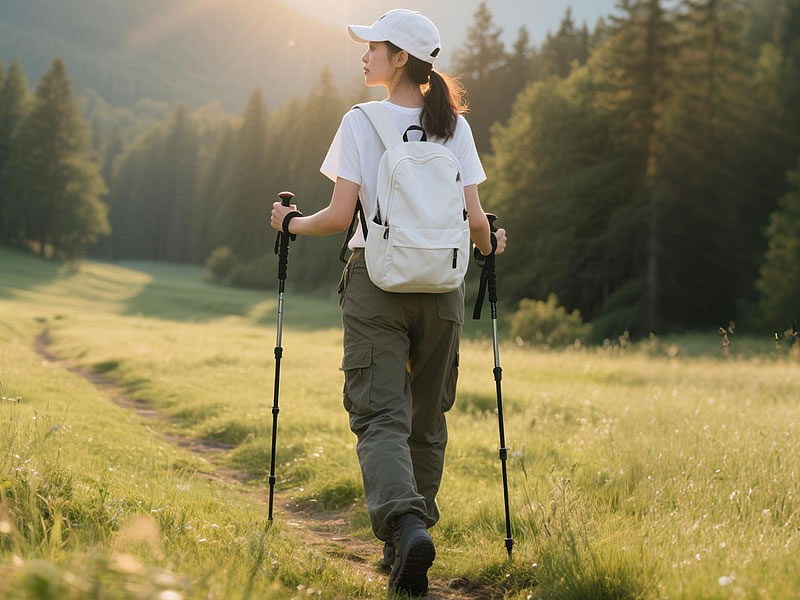Knee support braces for hiking downhill
Downhill hiking delivers brutal impact forces to your knees—up to 8x your body weight with each step. Whether you’re recovering from an injury or preventing one, the right knee brace can be a game-changer. This guide covers how to choose, use, and maximize support for pain-free descents.

Why Downhill Hiking Wrecks Your Knees
Descents strain knees through:
- Eccentric loading (muscles lengthen under tension)
- Increased shear forces on ligaments
- Patellar compression (kneecap pressure)Source: British Journal of Sports Medicine
Types of Knee Braces for Downhill Hiking
1. Compression Sleeves
- Best for: Mild discomfort, swelling control
- Pros: Lightweight, low-profile
- Top Pick: Bauerfeind GenuTrain (medical-grade compression + silicone patella support)
2. Hinged Braces
- Best for: ACL/MCL instability, post-injury
- Pros: Lateral stability, motion control
- Top Pick: DonJoy Defiance III (customizable hinges)
3. Patellar Stabilizing Braces
- Best for: Anterior knee pain, tracking issues
- Pros: Targets kneecap alignment
- Top Pick: McDavid Hex Pad (shock-absorbing hex gel)
Key Features to Prioritize
| Feature | Why It Matters |
|---|---|
| Silicone gel ring | Cradles kneecap, reduces tendon strain |
| Side stabilizers | Prevents dangerous lateral knee shifts |
| Open-patella | Reduces pressure on sensitive areas |
| Moisture-wicking | Prevents chafing on long hikes |
Pro Tips for Maximum Protection
- Pair with Trekking PolesReduces knee load by 25% (University of Salzburg study)Use adjustable poles for steep terrain
- Strengthen Supporting MusclesPre-hike exercises: Wall sits, step-downs, hamstring curlsRecovery: Foam rolling quads/IT bands
- Master the "Zigzag" TechniqueWalk diagonally across slopes to reduce grade impact
Complementary Gear for Knee Health
- Footwear: Cushioned midsoles (Hoka Speedgoat)
- Insoles: Custom orthotics for overpronation
- Compression: Calf sleeves improve blood flow
When to Seek Medical Help
🩺 Consult a specialist if you experience:
- Sharp pain during/after hikes
- Swelling that lasts >48 hours
- "Locking" or instability sensations
"A brace isn’t a cure—it’s part of a system. Combine it with strength training and smart technique."— Dr. Aaron LeBauer, Physical Therapist (Trail Medicine Specialist)
Top 3 Braces for Different Needs
- Best Overall: Shock Doctor 875 (dual hinges + compression)
- Most Breathable: CEPA Ranger 3.0 (mesh ventilation zones)
- Budget Pick: UFlex Athletics Sleeve (medical-grade support <$30)
Maintenance & Replacement Tips
- Hand-wash after sweaty hikes
- Replace every 6-12 months (elastic degrades)
- Check hinges for corrosion if wet frequently
Final Thoughts
Knee braces are tactical tools—not crutches. Used strategically with conditioning and technique, they empower hikers to tackle epic descents confidently. Listen to your body, descend mindfully, and let technology extend your trail longevity.
Your knees carry you—return the favor!






